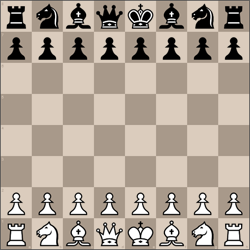< Prev Index Next >
 Chess 08 Jun 1919, Sun The Philadelphia Inquirer (Philadelphia, Pennsylvania) Newspapers.com
Chess 08 Jun 1919, Sun The Philadelphia Inquirer (Philadelphia, Pennsylvania) Newspapers.com
The game given below was played last summer at Los Angeles, Cal., in the Championship Tournament. The announced mate in six moves is well worth examining.
(a) A conservative form of the Giuoco Piano. White plays his fifth move in anticipation of Black Castling and later starting a King side attack.
(b) N-QB3 was the more natural continuation, to be followed by B-Q2, should Black pin the Queen's Knight.
(c) Mlotkowski considers this move weak, as it puts his Queen out of play and leaves the Queen's Pawn without support.
(d) An error of judgment as Black can reply NxBP; 21. NxN QxQ; 22. PxQ PxN, etc, nevertheless the win is not easy.
(e) Likely the best continuation. See previous note.
(f) This move does not improve matters. However, White's game appears hopelessly compromised.
(g) The mate is accomplished as follows: 28. RxPch; 29. K-Ksq N-B7ch; 30. K-Q2 K-K6ch; 31. KxN QxRch; 32. K-N3 Q-K4ch, followed by R-Rsq. mate.
W. A. Lewis (white) vs. Stasch Mlotkowski (black)
Italian Game: Giuoco Pianissimo
Submitted to chessgames.com on 05/11/2025
The two-move problem is an original composition by Mlotkowski never before published. Mlotkowski states that the problem was suggested by the four-hand round tournament, but does not comply with the conditions there stated of separate mates for every block, as the Knights are used to answer both the Rook and Bishop moves. However, more variety is obtained in this way, the threat having seven defenses, five illustrating Black interferences and two self blocks.
White to play and mate in two moves.
FEN Q4K1B/2Pp1R2/RN1nk3/2p3p1/2p1r1p1/4b2N/3r1p2/8 w - - 0 1
Solution: 1. Qd8 Nxf7 2. Qf6#























